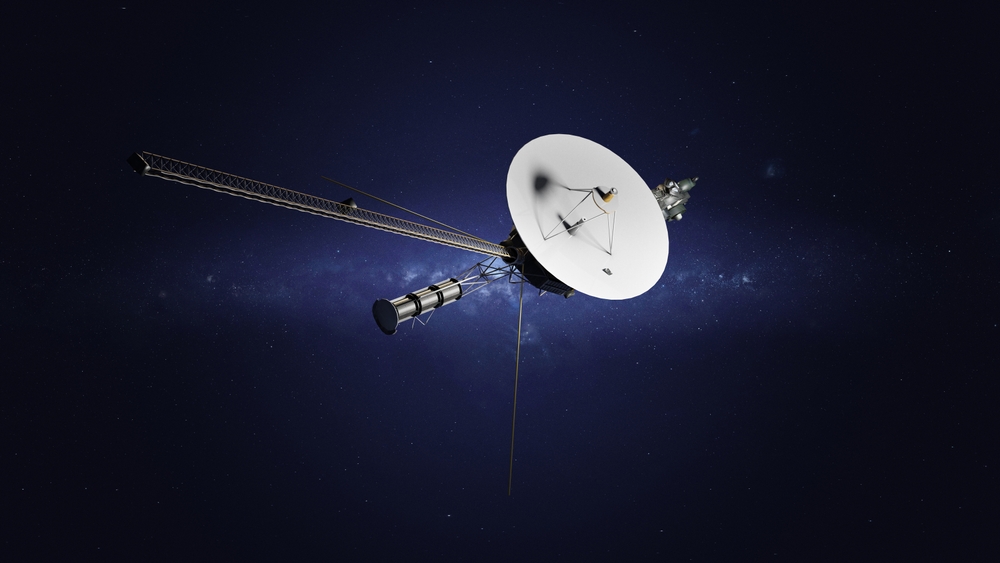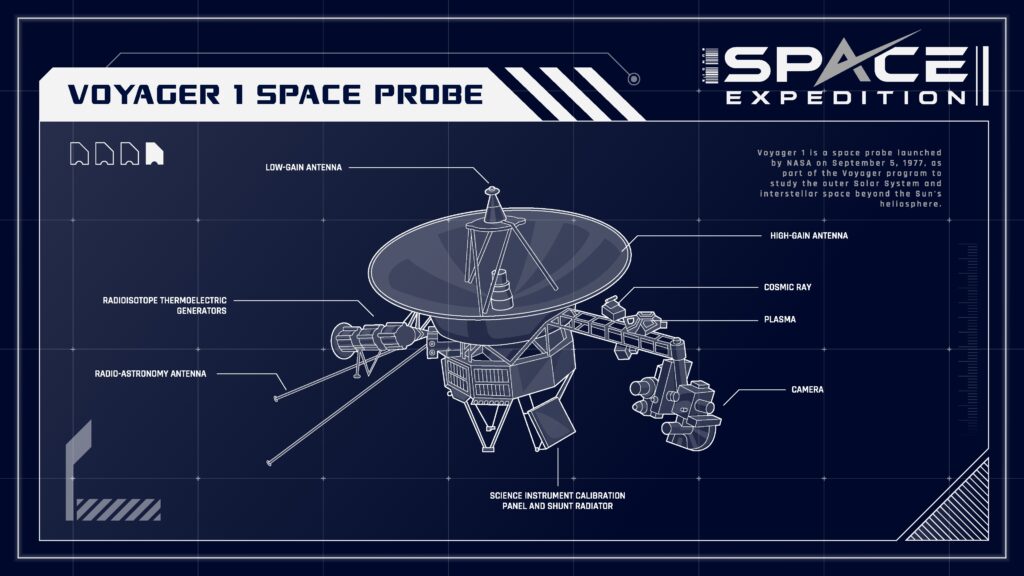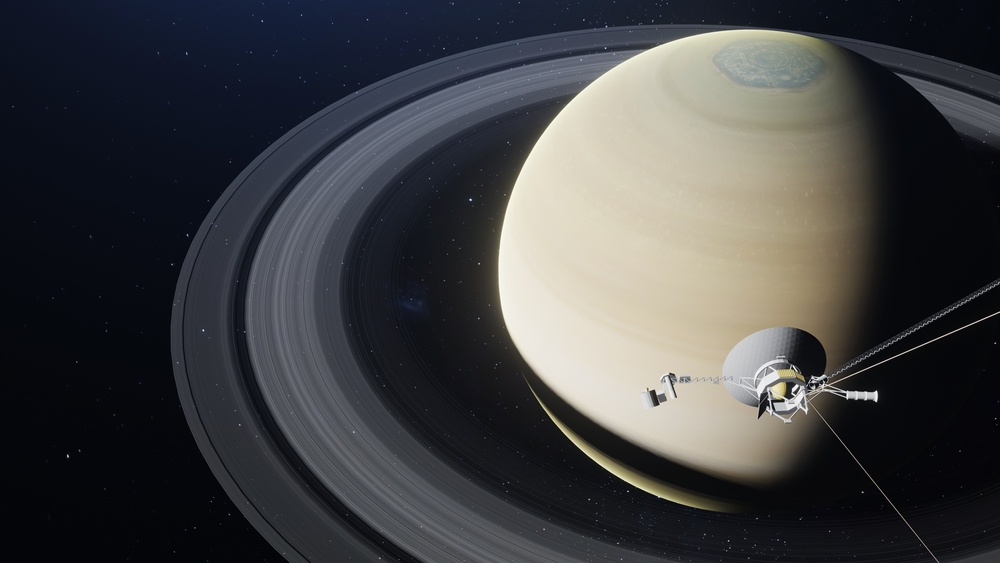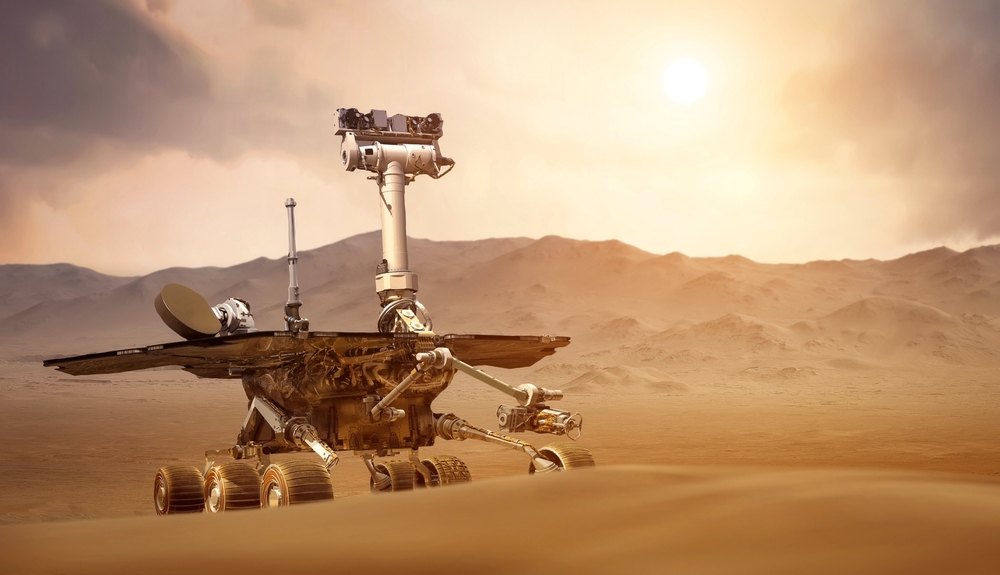NASA saves 46-year-old Voyager 1 mission by successfully reviving frozen thrusters from 15 billion miles away

Somewhere beyond the edge of the solar system, in the quiet stretch of interstellar space, a machine built by human hands is still whispering back to us. Voyager 1, launched before the internet existed and before many of us were even born, is still moving—still alive. But recently, it came dangerously close to going silent. A set of crucial thrusters, long dismissed as dead, needed to come back online. The odds were slim. The clock was ticking. And the antenna that could send commands was about to go dark for months.
This isn’t just a story about space hardware or a last-ditch technical fix. It’s about belief—about refusing to let go of something just because it’s old or struggling. It’s about the kind of human spirit that dares to keep reaching when logic says stop. And in a time when we often abandon what’s inconvenient, Voyager’s journey reminds us that endurance, imagination, and second chances still matter.

A Distant Whisper from the Edge of the Solar System
Fixing a machine nearly 15 billion miles away sounds like science fiction, but for NASA’s Voyager 1 team, it was a high-stakes reality. Launched in 1977 and still traveling at 35,000 miles per hour through interstellar space, Voyager 1 depends on its thrusters to stay oriented toward Earth. These thrusters gently pivot the spacecraft so its antenna can beam back precious data and receive commands. But after decades of space travel, the primary thrusters—especially those controlling its roll, or the slow spin that helps lock onto a guiding star—have begun to clog with residue. With the risk of total failure looming, engineers knew they had to act fast. Their best hope? A backup set of roll thrusters that hadn’t fired since 2004 and were considered unusable after their internal heaters lost power.
At the time of that failure, the team assumed those heaters were simply broken beyond repair. But now, facing a potential loss of communication if the primary thrusters failed, they revisited that conclusion. What if it wasn’t the heaters themselves, but a minor circuitry issue—a flipped switch in the power system? If they could reset it, maybe the heaters would come back online. And if the heaters worked, the thrusters might too. The risk was immense. If the spacecraft’s star tracker drifted while reactivating the system, Voyager’s programming would trigger a thruster fire. Without heat, that could cause a small explosion. Every move had to be calculated down to the millisecond, and they had only one shot before NASA’s only antenna capable of sending commands to Voyager—Deep Space Station 43 in Australia—went offline for months of upgrades beginning May 2025.
So in March 2025, the team sent the commands. Due to Voyager’s vast distance, it took over 23 hours for the signal to reach the spacecraft—and another 23 to learn what happened. But when data returned, the results were stunning: the heaters had warmed up, the dormant thrusters responded, and the spacecraft performed exactly as programmed. “These thrusters were considered dead,” said Todd Barber, the mission’s propulsion lead. “It was yet another miracle save for Voyager.” This success wasn’t just a technical fix; it was a testament to the perseverance of a team that refused to accept defeat. It showed that sometimes, what seems broken just needs to be understood differently. In reawakening a system once written off, Voyager 1 has reminded us—again—that resilience isn’t just about survival. It’s about daring to reimagine what’s possible.

Racing Against Silence
While reviving the backup thrusters was a triumph of engineering, it was also a race against time. Starting in May 2025, NASA’s Deep Space Station 43 (DSS-43) in Canberra—the only antenna on Earth powerful enough to send commands to Voyager 1—will go offline for nearly nine months for critical upgrades. During that window, the Voyager team will have only two brief opportunities, one in August and one in December, to send any new instructions. Missing that narrow window could mean losing the chance to intervene before the primary thrusters become fully clogged, potentially cutting off communication with the spacecraft altogether. Unlike other antennas in NASA’s Deep Space Network located in California and Madrid, DSS-43’s unique power and location make it indispensable for talking to a probe that’s now far beyond the heliosphere, the protective bubble surrounding our solar system.
This wasn’t the first time NASA faced a communications gap with the Voyagers, but the context is different now. With the current roll thrusters deteriorating, and the backup system only just revived after a 20-year dormancy, the risks are higher than ever. If Voyager 1 can no longer adjust its orientation, it could lose its lock on Earth. Even a few degrees of misalignment could cause its narrow-beam antenna to miss our planet entirely, cutting the data stream and essentially silencing one of the most valuable scientific missions in human history. That’s why the timing of the repair was so crucial. It wasn’t just about fixing a component—it was about preserving a fragile thread of communication stretched across the vastness of space, a thread that connects us to an explorer that’s traveled farther than any human-made object has before.

Lessons from the Long Game
The decision to even revisit the “dead” thrusters on Voyager 1 speaks volumes about the mindset that has defined the mission for nearly five decades—one rooted not just in technical excellence, but in a deep culture of curiosity and resilience. When the heaters for the roll thrusters failed in 2004, the assumption was reasonable: they were deemed beyond repair, and the team shifted to using the backup system. After all, nobody expected the spacecraft to still be functioning 20 years later. “They probably didn’t think the Voyagers were going to keep going for another 20 years,” said Kareem Badaruddin, Voyager mission manager at NASA’s Jet Propulsion Laboratory (JPL). And yet, here we are—challenged by the very decisions made in the face of those assumptions.
What changed wasn’t the hardware, but the perspective. A new generation of engineers combed through old technical documentation, analyzed telemetry data, and began to suspect that the failure might not have been mechanical at all. Instead, they hypothesized a subtle shift in the spacecraft’s circuitry—something that had switched the power supply to the heaters off without any overt sign. That kind of insight doesn’t come from simply following procedure; it comes from a mindset that’s willing to question accepted truths, even ones buried under 20 years of consensus. It’s the kind of thinking that says: let’s look again, and let’s not assume that what failed before is unchangeable now.
There’s a powerful lesson here about longevity—not just of machines, but of ideas. In an era of planned obsolescence, Voyager’s continued operation is a radical act. It reminds us that great missions aren’t always about new launches and faster speeds; sometimes they’re about patience, persistence, and the willingness to stretch the lifespan of what already exists. The Voyager team didn’t just bring a dead component back to life—they demonstrated that legacy systems, when stewarded with care and curiosity, can still surprise us. That kind of thinking—bold, meticulous, and grounded in hope—may be what keeps humanity connected to the stars far longer than we ever planned.

More Than a Machine
Voyager 1 is more than a spacecraft—it’s a time capsule, a storyteller, and a symbol of what human curiosity can become when we aim beyond what we can see. Since its launch in 1977, it has carried with it the Golden Record—a phonograph filled with sounds and images from Earth, intended for any intelligent life it might one day encounter. But beyond its poetic gesture, Voyager’s scientific legacy is unmatched. It was the first to offer close-up images of Jupiter’s and Saturn’s moons, to detect active volcanoes beyond Earth, and eventually, to cross into interstellar space, giving us direct data about a realm previously only theorized. That it’s still functioning nearly 50 years later is not just a marvel of engineering, but a testament to the value of long-term vision in a world often driven by short-term wins.
What makes the recent thruster revival even more profound is its symbolic resonance. Voyager 1 has become a metaphor for endurance—for pushing on even when systems fail, even when the odds seem final. In an era where missions come and go, where projects are abandoned at the first sign of limitation, Voyager teaches us to keep asking, keep trying. It invites us to trust in the slow work, the deep attention to detail, the relentless belief that something old can still offer something new. The fact that a decades-old spacecraft can be brought back from the brink through sheer human ingenuity is more than just a win for NASA—it’s a reminder of what’s possible when we refuse to give up.
We often think of space as distant and cold, but Voyager brings it close. It reflects the best of who we are—curious, persistent, creative under pressure. As it drifts further into the unknown, it carries not only instruments and data, but also the quiet hope of a species that dares to send its voice into the darkness. Every pulse from Voyager is a heartbeat of human spirit, a message that says: we are still here, we are still learning, and we are still reaching.
What Voyager Teaches Us About Ourselves
When you strip away the science, the engineering, and the decades of planning, what remains is a message—one that Voyager 1 has been sending all along. It’s the reminder that no distance is too far for a signal to be heard, no failure too final to revisit, and no story too old to still matter. In many ways, Voyager’s journey is a mirror for our own: we all carry systems that seem broken, dreams we once wrote off, parts of ourselves we believe are beyond repair. But maybe they’re not. Maybe, like that dormant thruster, they’re just waiting for someone to look a little closer, to ask a new question, to believe one more time that something can work again.
We live in a world that often moves on too quickly—from people, from problems, from potential. But Voyager calls us to slow down and reconsider. What if we applied the same patience and persistence in our own lives that NASA engineers used in coaxing a spark from 20-year-old circuits? What if we challenged the conclusions we made years ago about who we are or what’s possible? Whether it’s a personal struggle, a creative block, or a societal system overdue for renewal, there is always a chance to reroute, to reignite, to realign.
So take a cue from Voyager. When something stops working, don’t assume it’s over. When a door seems closed, check if there’s another way in. When life feels like it’s drifting too far off course, remember: you might just be one signal away from coming back online. Out there in the cold silence of space, a tiny machine continues its quiet revolution—not just around stars and dust clouds, but around every assumption we’ve made about endurance, about hope, and about how far we’re willing to go to stay connected. Maybe it’s not just a mission. Maybe it’s a metaphor. And maybe, just maybe, it’s speaking directly to you.
Loading...

